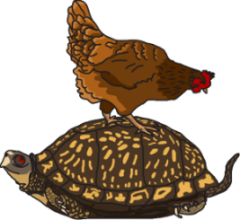Caring for your cutting board
How do I clean my cutting board?
Do not soak or submerge your cutting boards! Keep your hardwood cutting board clean by wiping off with a towel after use. You can scrape the board with a spatula to remove any caked on foods. When needed, we quickly wash our board with hot soapy water, dry it with a clean towel and let it air dry. If you want to sanitize the board more thoroughly, a diluted mixture of chlorine bleach or vinegar solution consisting of one teaspoon of liquid chlorine bleach in one quart of water may be used. Do not soak or submerge the board in water as this will disrupt the moisture content and cause the wood to split. Wood cutting boards are NOT dishwasher safe. The extreme heat and moisture will speed the deterioration of the wood, cause it to warp and possibly cause the glue to fail and the board to split.
How do I oil my cutting board?
Wood cutting boards need to be protected/moisturized every 3 to 4 weeks, depending on the frequency of use, and what atmospheric conditions are in your household. All Turtle and Chicken cutting boards are pre-soaked with mineral oil and then a cream of mineral oil and Pristine Valley Farms (Abingdon, MD) pure beeswax is applied to produce a shine, help repel moisture even more, and lend a pleasing aroma to the board. Here’s a quick post showing the before and after of oiling an end grain board.
Mineral oil alone or oil+beeswax cream?
Both products are food safe, effective and do similar jobs – protecting and prolonging the life of your board. You can use them individually or you can use both products if desired: perhaps using the oil first and then putting on a protective layer of cream. The cream contains an all-natural beeswax and food grade mineral oil formula. It is a denser, thicker product than oil alone that will give a protective layer to the board against food and moisture. Beeswax does not evaporate as quickly as oil. When using the cream, it is recommended that you apply directly onto the cutting board surface and massage by hand into the grain and let it sit overnight. Then remove the excess with a paper towel. Food grade mineral oil is a thinner product than the cream, is more easily absorbed, and goes further into the grain of the wood to help restore it. When using the oil, it is recommended that you apply a generous amount and let it sit overnight and see how it looks in the morning. Add more oil if necessary if there are dry spots. You can oil the board late at night, after everyone has left the kitchen. The next day the board is usually dry to the touch. Frequency of application of oil or cream will depend upon how often you use your board and how you clean it – wiping with a damp cloth vs. using warm water. Other factors to consider are weather conditions such as humidity and heat during the different seasons of the year. Simply put, if the board looks dry you should apply oil or cream.
How do I store my cutting boards?
Store your wood cutting board flat most of the time. You can put it on end to dry if it is damp, or if it is already dry, store flat in a dry area away from extreme hot or cold temperatures. Do not put in basement or garage as there is usually more extreme humidity and moisture or heat in these areas.
How do I get rid of garlic and onion odors on my cutting board?
Lemon or lime juice with a little salt will go a long way to reducing odor. Sprinkle your cutting board with kosher or table salt. Cut a lemon or lime into quarters and use these quarters to rub the salt into the board, squeezing juice onto the board as you go. Let sit for 2 minutes and then wipe the cutting board clean with a damp cloth. Use a clean paper towel to remove excess water or let the board air dry by standing it on end. Reapply oil or cream.
How do I remove stains from my cutting board?
Sprinkle kosher or table salt on your cutting board and then use a damp sponge or paper towel to rub the stained or discolored area. The salt will absorb stains, flavors, and odors. You can use a scraper or spatula to scrape down the board after use. For stubborn stains, try sanding down the area with a fine grit sand paper. It is very important to sand with the grain of the wood, never against the grain. This sanding process exposes a brand new wood work surface. Once sanding is complete, it is recommended to re-treat your cutting board with oil or cream. This protects the board and controls its moisture content, keeping it from drying out, cracking or splitting.
